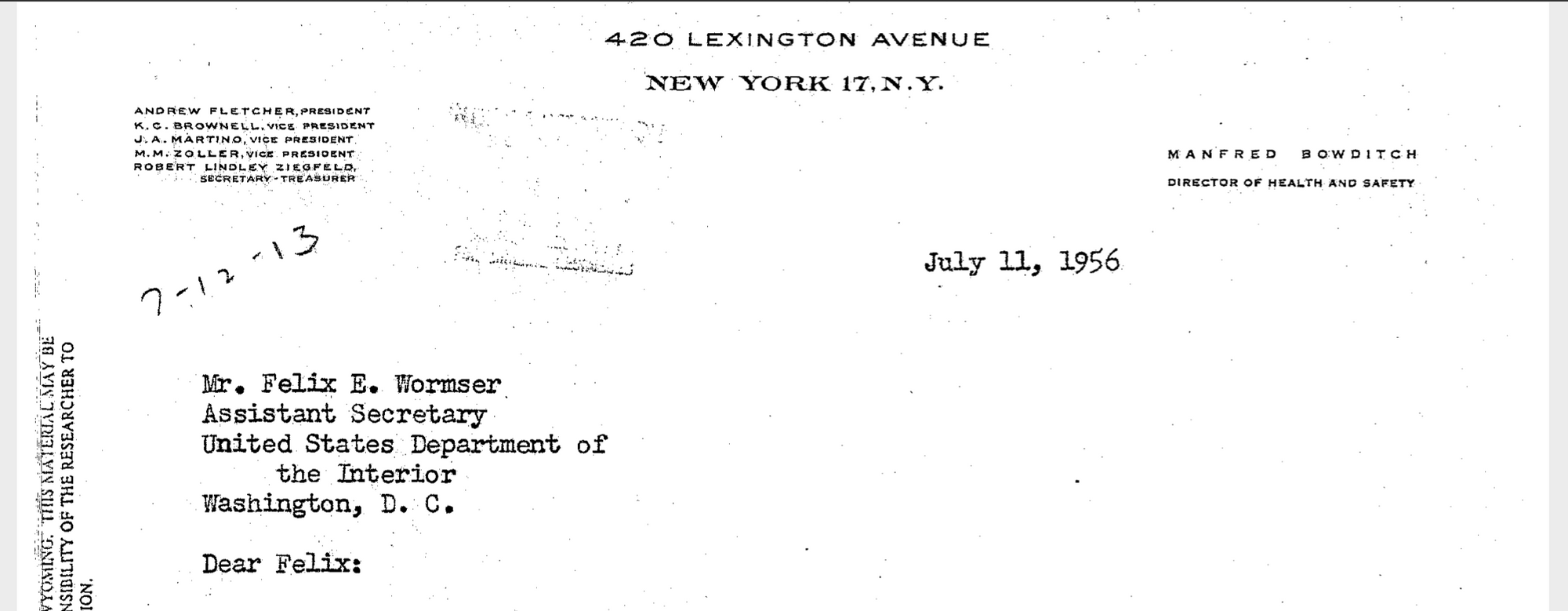Lead Industry Points Finger at Race and Class

In a candid letter to the Assistant Secretary of the Department of the Interior, Manfred Bowditch, the director of health and safety at Lead Industries Association recorded his annoyance with recent articles published about lead poisoning in children. The letter is from 1956, when lead paint was on everything from cribs to walls. According to Gerald Markowitz, historian of public health, the lead paint in the 1950s contained such high levels of the neurotoxin that only a few grams were enough to damage a child's brain.
In response to reports of children dying of lead poisoning, Bowditch notes he was "irritated" and "baffled." He feared the article would attract "adverse publicity."

Notably, Lead Industries acknowledged in the letter that these cases of lead poisoning among children were essentially caused by their paints; Bowditch admitted that the author of the newspaper article was a "respectable physician" and produced a "mainly factual" story. However, responsibility was placed on the consumer to be aware of these dangers.
Even in Bowditch's reflection on the poisoned children, he shifted the blame onto the environment. Instead of lead paint, he pointed his finger at the "slums" and the minority communities he claimed lacked education, essentially claiming that the issue was misuse of the product rather than the product itself.
Like the decades of industrial rhetoric before this moment, there was no proposed revaluation of industrial products. Instead, markers of race and class were held up as enabling lead poisoning, while the truth was that toxic industries preyed on these marginalized communities.
